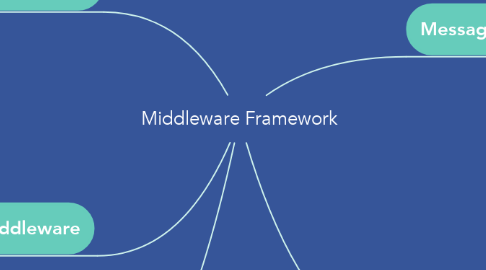
1. Communication Middleware
1.1. Definiton
1.1.1. Is computer software that enables two otherwise separate software components, processes, and/or applications to exchange information, either within one device, or between multiple devices.
1.2. Function
1.2.1. Provides an environment that enables two applications to set up a conversation and exchange data. Typically, this exchange of data will involve the triggering of one or more transactions along the way.
2. Transcoding Middleware
2.1. Definition
2.1.1. Ability to adapt digital files so that content can be viewed on different playback devices.
2.2. Function
2.2.1. Working like an interpreter, a transcoder translates files to a suitable format for the end user. The translations are built upon complicated algorithmic computations and require significant processing resources.
3. Distributed Object and Component
3.1. Definition
3.1.1. A type of infrastructure that allows remote access to remote objects transparently. It is based on the Remote Procedure Call (RPC) mechanism.
3.2. Function
3.2.1. It provides a programming abstraction based on the object-oriented principles.
4. Message-Oriented Middleware
4.1. Definition
4.1.1. software or hardware infrastructure supporting sending and receiving messages between distributed systems.
4.2. Function
4.2.1. Allows application modules to be distributed over heterogeneous platforms and reduces the complexity of developing applications that span multiple operating systems and network protocols.
5. Transaction Processing Middleware
5.1. Definition
5.1.1. Is information processing in computer science that is divided into individual, indivisible operations called transactions. Each transaction must succeed or fail as a complete unit; it can never be only partially complete.
5.2. Function
5.2.1. Transaction processing systems consist of computer hardware and software hosting a transaction-oriented application that performs the routine transactions necessary to conduct business. Examples include systems that manage sales order entry, airline reservations, payroll, employee records, manufacturing, and shipping.
